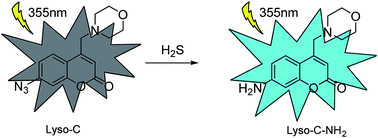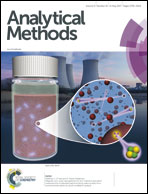An azidocoumarin-based fluorescent probe for imaging lysosomal hydrogen sulfide in living cells†
Abstract
A commercially available fluorescent hydrogen sulfide (H2S) probe 7-azido-4-methylcoumarin (AzMC) was developed into its lysosome-targeted counterpart Lyso-C via a four-step synthetic approach. Lyso-C displayed fast response (within 5 min), excellent sensitivity (with a detection limit of 37 nM) and high selectivity toward H2S. More importantly, Lyso-C was successfully applied to imaging lysosomal H2S and showed potential capability to quantitatively detect H2S in living cells.



 Please wait while we load your content...
Please wait while we load your content...